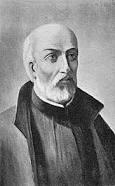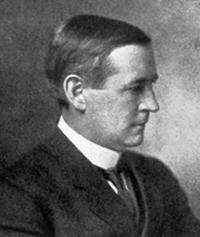Planning worship?
Check out our sister site, ZeteoSearch.org,
for 20+ additional resources related to your search.
- |
User Links
Person Results
‹ Return to hymnal



Export as CSV
Pablo D. Sosa
1933 - 2020 Person Name: Pablo Sosa Hymnal Number: 10 Author of "El Cielo Canta" in Sent by the Lord Pablo Sosa (b. 1933 - d. 2020) grew up and was educated in Argentina, the U.S. (Westminster Choir College), and Germany. For years he pastored a large Methodist congregation in Buenos Aires, Argentina while composing songs, leading choirs, editing hymnals, producing religious broadcasts, and teaching liturgy and hymnology at a seminary.
Meanwhile, life in Argentina pushed him to question his assumptions about what’s best for congregational singing. During Argentina’s “dirty war,” two young women from his church were disappeared, possibly for working among the poor. As Catholic and Protestant churches hesitated whether to speak out, remain silent, or support the government, many people lost faith. Economic meltdown after the war plunged many middle-class Argentinians into poverty. Sosa’s growing social awareness widened his vision for “lifting up hope with a song.” He often describes worship as “the fiesta of the faithful,” where all are welcome and all music is seen as “part of the ‘song of the earth,’ which answers the psalmist’s call ‘Sing joyfully to God, all the earth!’ (Psalm 98:4).”
Whether in his home church, Iglesia Evangélica Metodista La Tercera (Third Methodist Church) in Buenos Aires, or at churches or conferences around the world, he urges people, “Put your body into worship!” And he reminds them of the biblical connection between justice and worship.
CICW Website Bio (http://www.calvin.edu/worship)
Pablo D. Sosa
D. T. Niles

1908 - 1970 Hymnal Number: 34 Author of "Loving Creator" in Sent by the Lord
D. T. Niles
Elena G. Maquiso
1914 - 1995 Hymnal Number: 34 Composer of "HALAD" in Sent by the Lord
Elena G. Maquiso
Jean de Brébeuf

1593 - 1649 Person Name: Fr. Jean de Brebuf SJ Hymnal Number: 14 Author of "Jesous Ahatonhia" in Sent by the Lord Jean de Brébeuf, Jesuit missionary, born at Condé-sur-Vire in Normandy, 25 March, 1593; died in Canada, near Georgian Bay, 16 March, 1649. His desire was to become a lay brother, but he finally entered the Society of Jesus as a scholastic, 8 November, 1617. According to Ragueneau it was 5 October. Though of unusual physical strength, his health gave way completely when he was twenty-eight, which interfered with his studies and permitted only what was strictly necessary, so that he never acquired any extensive theological knowledge. On 19 June, 1625, he arrived in Quebec, with the Recollect, Joseph de la Roche d' Aillon, and in spite of the threat which the Calvinist captain of the ship made to carry him back to France, he remained in the colony. He overcame the dislike of the colonists for Jesuits and secured a site for a residence on the St. Charles, the exact location of a former landing of Jacques Cartier. He immediately took up his abode in the Indian wigwams, and has left us an account of his five months' experience there in the dead of winter. In the spring he set out with the Indians on a journey to Lake Huron in a canoe, during the course of which his life was in constant danger. With him was Father de Noüe, and they established their first mission near Georgian Bay, at Ihonatiria, but after a short time his companion was recalled, and he was left alone.
Brébeuf met with no success. He was summoned to Quebec because of the danger of extinction to which the entire colony was then exposed, and arrived there after an absence of two years, 17 July, 1628. On 19 July, 1629, Champlain surrendered to the English, and the missionaries returned to France. Four years afterwards the colony was restored to France, and on 23 March, 1633, Brébeuf again set out for Canada. While in France he had pronounced his solemn vows as spiritual coadjutor. As soon as he arrived, viz., May, 1633, he attempted to return to Lake Huron. The Indians refused to take him, but during the following year he succeeded in reaching his old mission along with Father Daniel. It meant a journey of thirty days and constant danger of death. The next sixteen years of uninterrupted labours among these savages were a continual series of privations and sufferings which he used to say were only roses in comparison with what the end was to be. The details may be found in the "Jesuit Relations".
In 1640 he set out with Father Chaumonot to evangelize the Neutres, a tribe that lived north of Lake Erie, but after a winter of incredible hardship the missionaries returned unsuccessful. In 1642 he was sent down to Quebec, where he was given the care of the Indians in the Reservation at Sillery. About the time the war was at its height between the Hurons and the Iroquois, Jogues and Bressani had been captured in an effort to reach the Huron country, and Brébeuf was appointed to make a third attempt. He succeeded. With him on this journey were Chabanel and Garreau, both of whom were afterwards murdered. They reached St. Mary's on the Wye, which was the central station of the Huron Mission. By 1647 the Iroquois had made peace with the French, but kept up their war with the Hurons, and in 1648 fresh disasters befell the work of the missionaries — their establishments were burned and the missionaries slaughtered. On 16 March, 1649, the enemy attacked St. Louis and seized Brébeuf and Lallemant, who could have escaped but rejected the offer made to them and remained with their flock. The two priests were dragged to St. Ignace, which the Iroquois had already captured.
On entering the village, they were met with a shower of stones, cruelly beaten with clubs, and then tied to posts to be burned to death. Brébeuf is said to have kissed the stake to which he was bound. The fire was lighted under them, and their bodies slashed with knives. Brébeuf had scalding water poured on his head in mockery of baptism, a collar of red-hot tomahawk-heads placed around his neck, a red-hot iron thrust down his throat, and when he expired his heart was cut out and eaten. Through all the torture he never uttered a groan. The Iroquois withdrew when they had finished their work. The remains of the victims were gathered up subsequently, and the head of Brébeuf is still kept as a relic at the Hôtel-Dieu, Quebec.
His memory is cherished in Canada more than that of all the other early missionaries. Although their names appear with his in letters of gold on the grand staircase of the public buildings, there is a vacant niche on the façade, with his name under it, awaiting his statue. His heroic virtues, manifested in such a remarkable degree at every stage of his missionary career, his almost incomprehensible endurance of privations and suffering, and the conviction that the reason of his death was not his association with the Hurons, but hatred of Christianity, has set on foot a movement for his canonization as a saint and martyr. An ecclesiastical court sat in 1904 for an entire year to examine his life and virtues and the cause of his death, and the result of the inquiry was forwarded to Rome. [He was canonized in 1930. --Ed.]
--www.newadvent.org/cathen/02751b.htm
Jean de Brébeuf
Jesse Edgar Middleton

1872 - 1960 Person Name: J. E. Middleton Hymnal Number: 14 Translator of "Jesous Ahatonhia" in Sent by the Lord Middleton, Jesse Edgar. (Wellington County, Ontario, November 3, 1872--May 27, 1960, Toronto, Ont.). United Church. Although he trained as a teacher, he turned to journalism in 1895. After learning his new trade, he became the Montreal Herald's correspondent in Quebec, and was there when Ernest Myrand brough out Noels anciens de la Nouvelle-France (1899), containing a French version of the carol which Father Brebeuf, S.J., had written in 1641 for the Huron, whose descendents had handed it on by oral tradition.
He then came to Toronto as a special writer for The Mail and Empire, and from 1942 onward, for Saturday Night as well; meanwhile, he served Centennial Church as choirmaster for about 40 years. With all this, he managed to produce several books on the history of Toronto and Ontario; though not an academic, neither was he a dilettante, and the leading scholars of the province were glad to work with him. His pamphlet on The First Canadian Carol came out in 1927, simultaneously with the first volume of his History of Ontario, in which Brebeuf's mission forms the earliest fully-documented episode; hence we may believe that Middleton knew what he was about in preparing "'Twas in the moon of winter-time."
--Hugh D. McKellar, DNAH Archives
===============================
Jesse Edgar Middleton, 1872-196
Born: November 3, 1872, Pilkington, Ontario, Canada.
Died: May 27, 1960, Toronto, Canada.
Buried: Fort Macleod, Alberta, Canada.
Son of a Methodist minister, Middleton attended Dutton High School and the Strathroy Collegiate Institute, then taught school for three years. He then worked for three years as a proofreader for a publisher in Cleveland, Ohio, and later became music critic for the Mail and Empire. In 1904, he joined The News. He also led the choir at the Centennial Methodist Church, and sang in the Mendelssohn Choir.
Sources: Stulken, p. 175
Translations "’Twas in the Moon of Wintertime"
--www.hymntime.com/tch
Jesse Edgar Middleton
Jorge Maldonado
b. 1944 Hymnal Number: 18 Translator of "Sent By The Lord " in Sent by the Lord
Jorge Maldonado
Kōn-yong Yi
b. 1947 Person Name: Geonyong Lee Hymnal Number: 23 Author of "Come Now, O Prince Of Peace" in Sent by the Lord Kōn-yong Yi (Geon-yong Lee) (이건용)
Kōn-yong Yi
Pablo Fernández Badillo
b. 1919 Person Name: Pablo Fernandez Badillo Hymnal Number: 39 Author of "Alabanza" in Sent by the Lord Puerto Rico, Teacher
Sing a New Song No. 3 by Patrick Prescod (Bridgetown, Barbados: Cedar Press, 1981)
Pablo Fernández Badillo
Francisco F. Feliciano
1941 - 2014 Person Name: Francisco Feliciano Hymnal Number: 38 Composer of "[We believe: Maranatha]" in Sent by the Lord
Francisco F. Feliciano


 My Starred Hymns
My Starred Hymns


